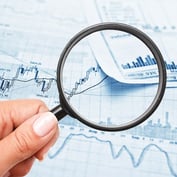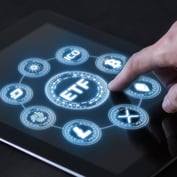The song “Physical” was a 1981 hit by Olivia Newton-John and it conjures up the yearning that some investors have for hard or physical assets. Aside from other tangible property like real estate or collectibles, commodities play an important role in a diversified portfolio.
Unfortunately, most people aren’t farmers and don’t have adequate storage space for 300 bushels of corn or a herd of cattle. Perhaps, that’s why so many individual investors own little to no commodities inside their portfolios. And that’s really the value proposition of commodity-based ETPs: to deliver affordable market exposure to an important asset class that investors would otherwise miss.
Hedging Inflation
One of the principal arguments for owning commodities is to provide defense against a loss of purchasing power or inflation. But are commodities still a good bet against the wrath of inflationary forces? It depends.
“Some commodities are better hedges than others and some are better hedges during different parts of the inflation cycle,” said Daryl Montgomery, author of Inflation Smart: Profitable Investing When Money Devalues. “Gold and silver are your best overall hedges whereas industrial metals, such as copper, lead, nickel, tin and zinc are good when inflation has revved up the economy, but not later on when it starts to take its toll on economic growth and turns into stagflation,” he adds.
Montgomery notes the more inflationary the environment, the better commodities perform. He points to how commodity prices bottomed in 1998 and have been on an upswing ever since.
As for the claims by the U.S., U.K. and EU governments that there is no inflation, Montgomery says the inflation proof is everywhere, “all you have to do is go shopping.”
Underneath the Hood
Commodity ETPs can generally be classified into three groupings; broad baskets, sector baskets and single baskets. Unlike stock and bond ETFs, which are structured as investment companies under the Investment Company Act of 1940, commodity-based ETFs are typically organized as partnerships, trusts or ETNs.
Although the ETN structure offers greater tax-efficiency compared to a partnership or trust, there are drawbacks. Since ETNs are unsecured debt, investors must bear the credit risk of the issuing company. Worst case scenario, the ETN backer goes bankrupt and the notes become worthless, as occurred with Lehman Brothers Opta ETNs.
Funds or ETNs that hold commodities futures replace expiring contracts with new futures contracts that are often more expensive, which subjects them to “contango.” The unfortunate effect of contango is performance drag. The opposite market condition is “backwardation,” where the price of a futures contract is trading below its expected spot price at the contract’s maturity. Backwardation can boost commodity returns.
Broad Baskets
The $5.6 billion PowerShares DB Commodity Index Trading Fund (DBC) and the $1.6 billion Path Dow Jones-UBS Commodity Index Total Return ETN (DJP) are among the largest broadly diversified U.S.-listed commodity ETPs.
“I prefer DJP because you avoid the tax complications of a K-1 from some of the more well-known ETF competitors such as DBC,” said David Fabian, managing partner at FMD Capital Management in Irvine, Calif. “Both funds provide similar exposure to futures contracts that track natural gas, gold, crude oil, copper and soft commodities as well.”
Another choice is the Greenhaven Continuous Commodities Fund (GCC), which avoids concentrating too much of its portfolio exposure on a single or group of commodities by equal weighting 17 different commodities and rebalancing.

“Equal weighting provides more diversification than being overweight in one sector like energy or precious metals. It’s the same reason why an investor seeking broad equity exposure might buy an ETF tracking the S&P500 vs. buying one that tracks only health-care companies,” said Ashmead Pringle, president, GreenHaven Commodity Services.
Sector Baskets
Sector basket ETPs differ from broad commodity baskets because they concentrate their exposure in a specific segment of the commodities market.








 April 28, 2014 at 08:00 PM
April 28, 2014 at 08:00 PM











